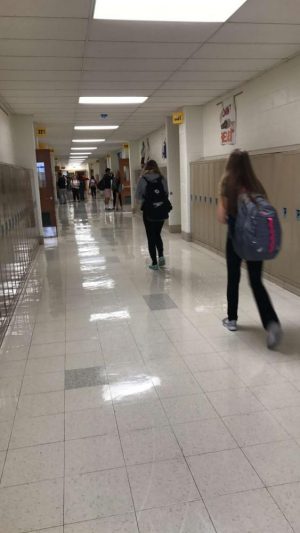Understanding the imbalance between the two schools
October 11, 2017
District 86 residents have voiced their opinions this year on the imbalances between Central and South, both in terms of enrollments and buildings.
As student numbers at Central continued to increase, the population of students attending South dropped. About 2,800 students attend Central, while South has a population of about 1,600. According to Chicago Tribune, Central has about 300 more students than architects have deemed an ideal enrollment, and South has about 400 fewer than ideal. The target enrollment, however, has been debated.
“This building has the same amount of classrooms, but more kids. There aren’t enough classrooms to accommodate the students,” said Mrs. Shannon Voytsekhovskyy, World Language teacher.
Mrs. Voytsekhovskyy transferred from South after working there for a total of 9 years and is in her second year of teaching at Central. Due to decreased enrollment at South, some South teachers have transitioned to working at Central for the increased student population.
One observable issue due to overcrowding occurs every day in school hallways.
“The hallways are packed with students which makes getting around fast difficult,” said Nidhi Gopagani, junior.
Some students have also voiced concerns with class sizes saying that the bigger class size gives each student less time with teachers. According to the Illinois Report Card, however, both schools are listed as having a 17:1 teacher pupil ratio.
“I feel like I don’t get as much attention and help from my teachers as I want,” Gopagani said. “With too many students in one classroom, it’s difficult to always receive help from my teachers.”
Keelyn Cranley, sophomore at South, experiences attention and help from her teachers and says she enjoys having fewer students in class.
“A pro of less students is more one on one time with my teachers,” Cranley said.

Hallways at South appear less crowded during passing periods.
While the school report card has not shown a change to this ratio, some teachers have said they see the impact.
“When classes are too big, it’s hard to give personal attention, and when they’re too small, it’s hard to generate discussion,” Mrs. Voytsekhovskyy said.
Aside from the population, other factors are believed to be imbalanced by District 86 residents between the two schools.
“Central has a much more homogenous student body, both economically, racially, and ethnically. There is a genuine richness to the experience of studying amongst peers of varying socioeconomic, racial, and ethnic backgrounds,” Mrs. Voytsekhovskyy said. “South is a far accurate reflection of what the outside world looks like and is like.”
While opinions differ, solutions to this issue are included in surveys being conducted that ask opinions on proposed solutions. Some include redrawing property lines or combining schools and splitting the campuses.
“I don’t think it’s fair to make students currently attending Central transfer,” Mrs. Voytsekhovskyy said. “It’s hard to make them transfer in the middle of their high school career.”
While some believe that transferring students should start with incoming students or no students at all, some think otherwise.
“[Transferring students to South] would help balance out the population a lot better at both schools,” Gopagani said.
Although this issue is something many have spoken about, a solution has yet to be determined by the school board. All members of District 86 are encouraged to attend forums being held to voice their opinions and help produce a solution.
The next school board meeting is Oct. 16 at Hinsdale South High School at 7 p.m.



